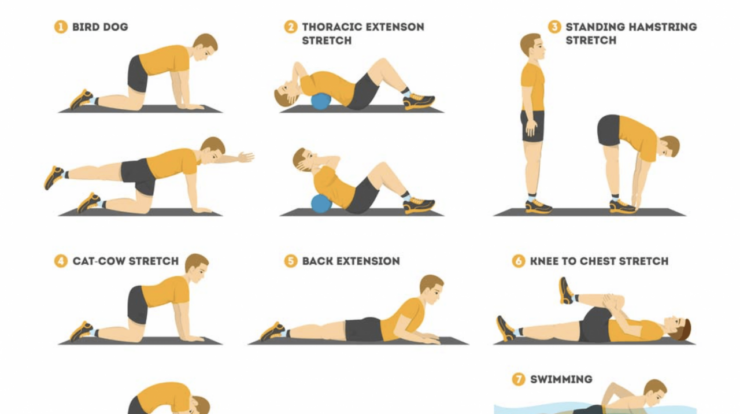
How to handle his snake yumi sin and fit kitty – Welcome to the fascinating world of snake handling, where we delve into the art of interacting with these captivating creatures. Join us as we explore the intricacies of caring for your Yumi Sin and Fit Kitty snakes, ensuring their well-being and fostering a harmonious bond.
Identifying Snake Species and Characteristics
Accurately identifying the species of a snake is crucial for determining its handling requirements, potential risks, and appropriate care. Different snake species possess unique characteristics, including size, color, markings, temperament, feeding habits, and potential risks.
Physical Characteristics
The size of a snake can range from a few inches to several feet in length. The color and markings of snakes vary widely, with some species exhibiting vibrant patterns and others having more subdued coloration. Unique markings, such as stripes, spots, or blotches, can help identify specific snake species.
Temperament and Behavior
The temperament of snakes can vary significantly. Some species are docile and easy to handle, while others may be more aggressive or defensive. Understanding the typical behavior of a particular snake species is essential for safe handling.
Do you want to learn how to handle his snake yumi sin and fit kitty? It’s not as hard as it sounds. With a little practice, you’ll be able to do it like a pro. Here’s a great article that can help: how to handle his snake yumi sin and fit kitty . It covers everything you need to know, from how to hold your snake to how to feed it.
So what are you waiting for? Start learning today!
Feeding Habits
Snakes have diverse feeding habits. Some species are carnivorous and feed on rodents, birds, or other animals. Others may be insectivores, feeding primarily on insects or worms. The feeding habits of a snake should be considered when determining the appropriate diet and care.
Potential Risks
Certain snake species may pose potential risks to humans. Venomous snakes, for example, have specialized glands that produce venom. Venom can cause serious injury or even death if not treated promptly. Non-venomous snakes may still bite or constrict, which can cause pain or injury.
Handling Techniques and Safety Precautions
To ensure the safety of both the handler and the snake, it is essential to adopt proper handling techniques. These techniques involve correct gripping methods, appropriate body positioning, and the use of protective gear.
Handling his snake Yumi Sin and fit kitty can be a handful, but by increasing insurance agent productivity, he can free up more time to dedicate to them. How to increase insurance agent productivity provides valuable insights into streamlining processes, maximizing efficiency, and enhancing customer service.
With these strategies in place, he can improve his overall performance and have more time to enjoy the company of his beloved pets.
Proper Gripping Methods
When gripping a snake, it is crucial to use a secure and comfortable hold. The most common and effective grip is the “hook and hold” method. This involves using one hand to gently hook the snake’s head behind the jaw, while the other hand supports its body.
Avoid gripping the snake too tightly, as this can cause injury or stress.
Appropriate Body Positioning
When handling a snake, it is equally important to maintain a proper body position. This involves keeping the snake at a safe distance from your face and body, and avoiding any sudden movements. Keep your feet shoulder-width apart for stability, and bend your knees slightly to lower your center of gravity.
Use of Protective Gear
To minimize the risk of snake bites, it is advisable to wear protective gear when handling snakes. This gear includes snake-proof gloves, long sleeves, and pants. Gloves should be made of thick material that can withstand snake bites, while clothing should be loose-fitting to allow for quick movement if necessary.
Avoiding Snake Bites
Despite taking precautions, snake bites can still occur. To avoid bites, it is essential to remain calm and avoid provoking the snake. Never handle a snake that is agitated or defensive. If a snake does bite, remain calm and seek medical attention immediately.
Housing and Environmental Considerations: How To Handle His Snake Yumi Sin And Fit Kitty

Providing a suitable enclosure and maintaining appropriate environmental conditions are crucial for the well-being of your snake. Here are the key factors to consider:
Enclosure Size and Security
The enclosure should be spacious enough for the snake to move around comfortably and stretch out fully. The minimum size depends on the species, but as a general rule, the enclosure should be at least as long as the snake’s body and half as wide.
It’s also essential to ensure the enclosure is secure and escape-proof, with a tight-fitting lid or lock. Proper ventilation is equally important to prevent respiratory issues.
Temperature and Humidity
Snakes are ectothermic, meaning they rely on external heat sources to regulate their body temperature. Provide a temperature gradient within the enclosure, with a warm end and a cool end. The optimal temperature range varies depending on the species, but most snakes prefer a warm end around 85-90°F (29-32°C) and a cool end around 75-80°F (24-27°C).
Humidity levels should also be maintained within an appropriate range to prevent dehydration or respiratory problems.
It’s like trying to manage his snake Yumi Sin and fit kitty simultaneously, but on a grander scale. Insurance agents face similar challenges in juggling multiple tasks and clients. Just like finding the right balance between feeding Yumi Sin and giving kitty a belly rub, increasing insurance agent productivity requires a delicate touch.
By implementing strategies like how to increase insurance agent productivity , agents can optimize their time, streamline processes, and ultimately improve their overall effectiveness. Just remember, it’s not just about closing deals; it’s about nurturing relationships and providing exceptional service, just like keeping Yumi Sin happy and kitty purring.
Hiding Spots and Climbing Structures
Snakes feel secure and comfortable when they have hiding places to retreat to. Provide multiple hides of various sizes and shapes, such as caves, tubes, or foliage. Climbing structures, such as branches or rocks, allow snakes to exercise and explore their environment.
Water Source
A clean and easily accessible water source is essential for hydration and shedding. The water bowl should be large enough for the snake to soak in if desired and should be changed regularly to prevent contamination.
Feeding and Nutritional Requirements

Snakes have unique dietary needs that must be met to ensure their health and well-being. Understanding their feeding habits, nutritional requirements, and proper feeding techniques is crucial for responsible snake ownership.
Diet and Prey Selection
The diet of snakes varies depending on their species. Most snakes are carnivorous, feeding primarily on small mammals, birds, reptiles, amphibians, or fish. The size of the prey should be appropriate to the snake’s size and age. Feeding snakes live prey is generally not recommended due to the risk of injury to the snake or the prey animal.
Nutritional Value and Supplementation
Different prey items have varying nutritional values. Snakes require a balanced diet that provides essential nutrients such as protein, fat, calcium, and vitamins. Supplementation with vitamins and minerals may be necessary to ensure adequate nutrition, especially if the snake is not eating a variety of prey items.
Feeding Process and Monitoring
Snakes typically feed infrequently, with the frequency varying depending on the species, age, and size of the snake. It’s important to monitor the snake’s weight and body condition to ensure it is receiving adequate nutrition. If the snake is losing weight or appears thin, the feeding frequency or prey size may need to be adjusted.
Handling his snake Yumi Sin and fit kitty is a breeze, but when it comes to increasing insurance agent productivity, check this out . After all, he needs to keep his snake Yumi Sin and fit kitty happy and healthy, and that means being productive at work.
Health and Veterinary Care
Snakes, like any other pet, require proper care and attention to maintain their health and well-being. Being aware of common health issues and preventive measures is crucial for responsible snake ownership. Additionally, regular veterinary checkups and quarantine procedures play a significant role in ensuring the health of your snakes.
Common Health Issues
Snakes are susceptible to various health issues, including respiratory infections, skin infections, and digestive problems. Recognizing the symptoms of these conditions and seeking prompt veterinary attention is essential. Some common signs of illness in snakes include:
- Lethargy and decreased appetite
- Wheezing or difficulty breathing
- Skin lesions, discoloration, or shedding problems
- Vomiting or regurgitation
- Weight loss
Prevention and Treatment
Maintaining a clean and appropriate environment, providing a balanced diet, and minimizing stress can help prevent health issues in snakes. Regular veterinary checkups allow for early detection and treatment of any developing conditions. Veterinary care for snakes includes:
- Physical examinations
- Diagnostic tests (e.g., blood work, X-rays)
- Treatment of infections and injuries
- Nutritional counseling
Veterinary Checkups
Regular veterinary checkups are crucial for the health and longevity of your snake. A qualified reptile veterinarian can provide comprehensive care, including:
- Health screenings
- Parasite control
- Vaccinations (if available)
- Emergency care
Quarantine Procedures, How to handle his snake yumi sin and fit kitty
When introducing new snakes into an existing collection, it’s essential to implement quarantine procedures to prevent the spread of diseases. Quarantine involves isolating the new snake for a period of time to monitor for any signs of illness. This helps prevent the introduction of pathogens into the established snake population.
- Isolate the new snake in a separate enclosure
- Monitor for signs of illness for 30-60 days
- Seek veterinary attention if any symptoms arise
By understanding common health issues, practicing preventive measures, and seeking regular veterinary care, you can ensure the well-being and longevity of your beloved snake companion.
Final Review

Through this comprehensive guide, you’ve gained invaluable knowledge on handling your Yumi Sin and Fit Kitty snakes. Remember, patience, understanding, and a deep respect for these animals are key to a fulfilling and enriching experience. May your journey with these enchanting creatures be filled with joy and discovery.
Quick FAQs
What are the unique characteristics of Yumi Sin snakes?
Yumi Sin snakes are known for their vibrant green coloration, intricate patterns, and relatively docile nature.
How often should I feed my Fit Kitty snake?
Fit Kitty snakes typically require feeding once every 5-7 days, depending on their size and age.
What are the signs of a healthy snake?
A healthy snake will have clear eyes, smooth scales, and an active appetite.





